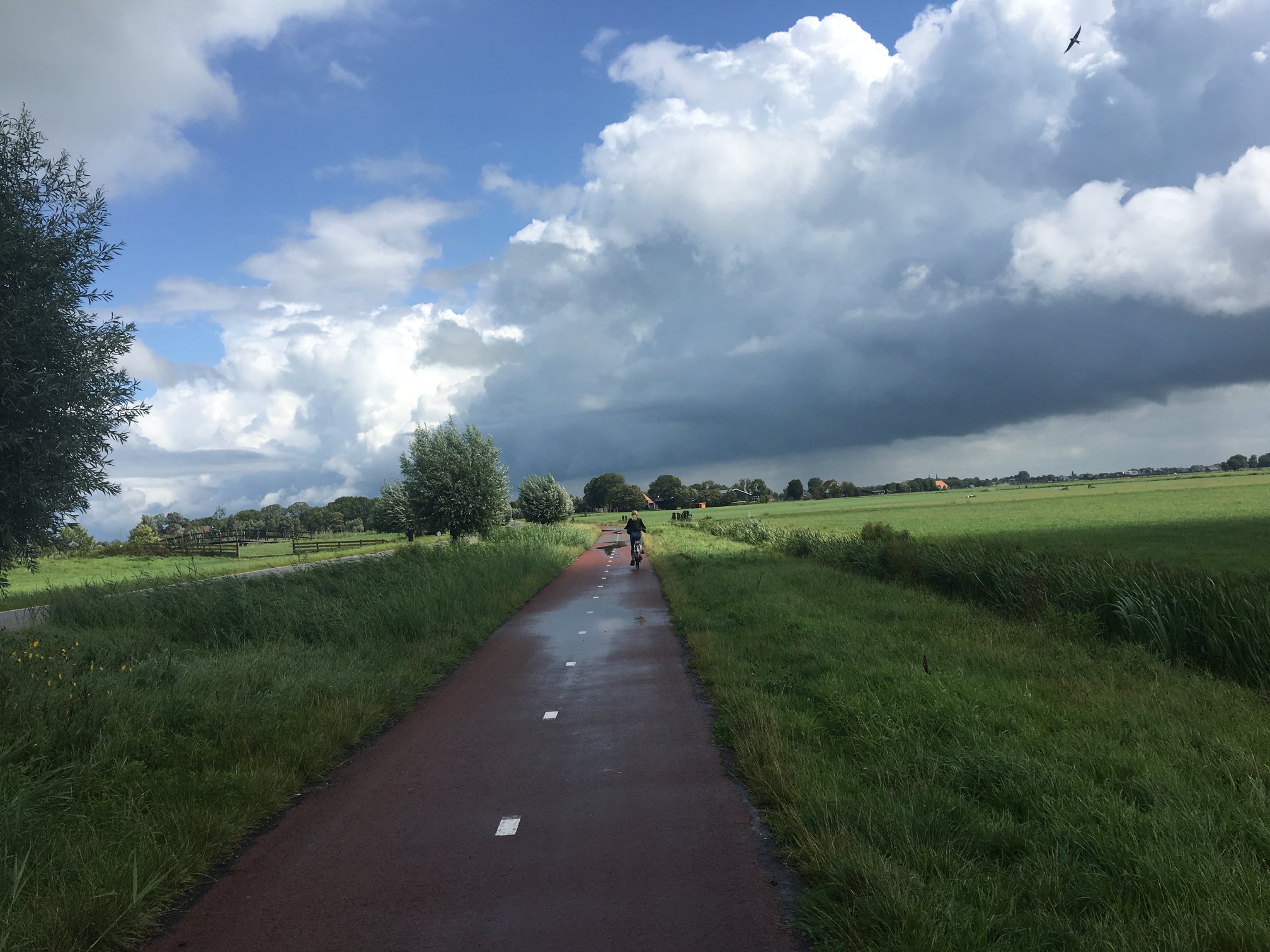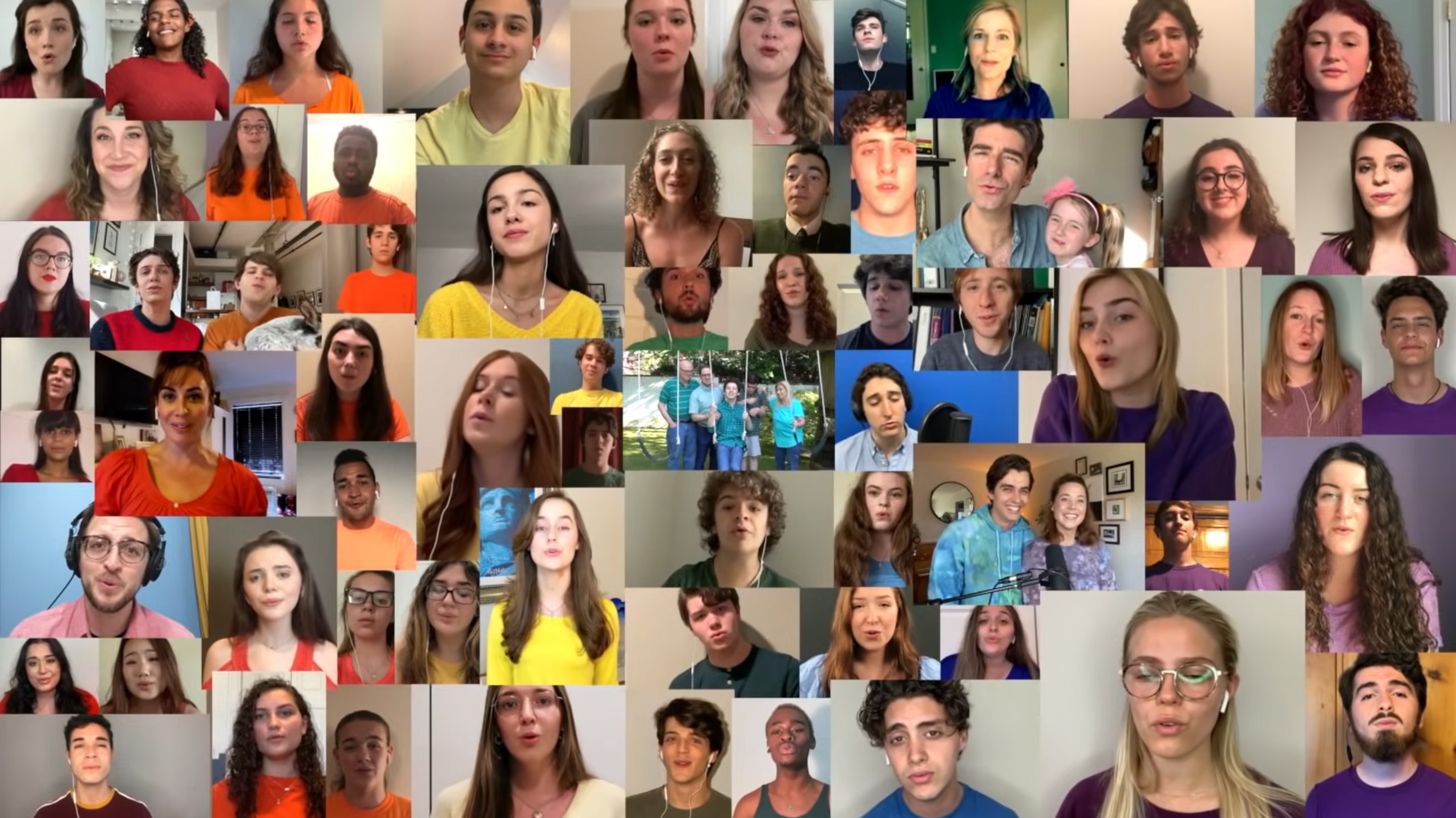The thunderbolt steers all things.
—Heraclitus, c. 500 BC

After the rain. Personal photograph taken by Mike Anthony biking with his niece in Wirdum, The Netherlands
Today at 15:00 UTC we examine the technical literature about rainwater management in schools, colleges and universities — underfoot and on the roof. Lightning protection standards will also be reviewed; given the exposure of outdoor athletic activity and exterior luminaires.
We draw from previous standardization work in titles involving water, roofing systems and flood management — i.e. a cross-cutting view of the relevant standard developer catalogs. Among them:
American Society of Civil Engineers
American Society of Plumbing Engineers
ASHRAE International
ASTM International
Construction Specifications Institute (Division 7 Thermal and Moisture Protection)
Environmental Protection Agency | Clean Water Act Section 402
Federal Emergency Management Agency
FM Global
Water Cycle Equation:
Precipitation = Runoff + Infiltration + Evapotranspiration + ΔStoragehttps://t.co/DdIA3UWUxy
Georgia Southern University Civil Engineering & Constructionhttps://t.co/rVhv4tyuBt@GeorgiaSouthern pic.twitter.com/9yo5NZrJQH— Standards Michigan (@StandardsMich) September 10, 2020
IAPMO Group (Mechanical and Plumbing codes)
Institute of Electrical and Electronic Engineers
Heat Tracing Standards
Notice of New Standard Product IEEE 1692-2023
IEEE Guide for the Protection of Communication Installations from Lightning Effectshttps://t.co/y8ZdmtBDRV pic.twitter.com/JG30sFEJlr
— IEEE Standards Association | IEEE SA (@IEEESA) September 2, 2024
International Code Council
Chapter 15 Roof Assemblies and Rooftop Structures
Why, When, What and Where Lightning Protection is Required
National Fire Protection Association
National Electrical Code: Article 250.16 Lightning Protection Systems
Lightning Protection
Underwriters Laboratories: Lightning Protection
Underground Stormwater Detention Vaults
United States Department of Agriculture: Storm Rainfall Depth and Distribution
Readings: The “30-30” Rule for Outdoor Athletic Events Lightning Hazard
As always, our daily colloquia are open to everyone. Use the login credentials at the upper right of our home page.
Enjoying Princeton, with its replica of Magdalen's Great Tower, and its authentically British-style rain pic.twitter.com/FqaQTIUFqc
— Dinah Rose (@DinahGLRoseKC) September 10, 2023
The “lightning effect” seen in carnival tricks typically relies on a scientific principle known as the Lichtenberg figure or Lichtenberg figure. This phenomenon occurs when a high-voltage electrical discharge passes through an insulating material, such as wood or acrylic, leaving behind branching patterns resembling lightning bolts.
The process involves the creation of a temporary electric field within the material, which polarizes its molecules. As the discharge propagates through the material, it causes localized breakdowns, creating branching paths along the way. These branching patterns are the characteristic Lichtenberg figures.
In the carnival trick, a high-voltage generator is used to create an electrical discharge on a piece of insulating material, such as acrylic. When a person touches the material or a conductive object placed on it, the discharge follows the path of least resistance, leaving behind the branching patterns. This effect is often used for entertainment purposes due to its visually striking appearance, resembling miniature lightning bolts frozen in the material. However, it’s crucial to handle such demonstrations with caution due to the potential hazards associated with high-voltage electricity.
How you know we haven’t had rain for awhile… pic.twitter.com/5zb84HeDUR
— Allison farms (@Allisonfarms) August 5, 2024








